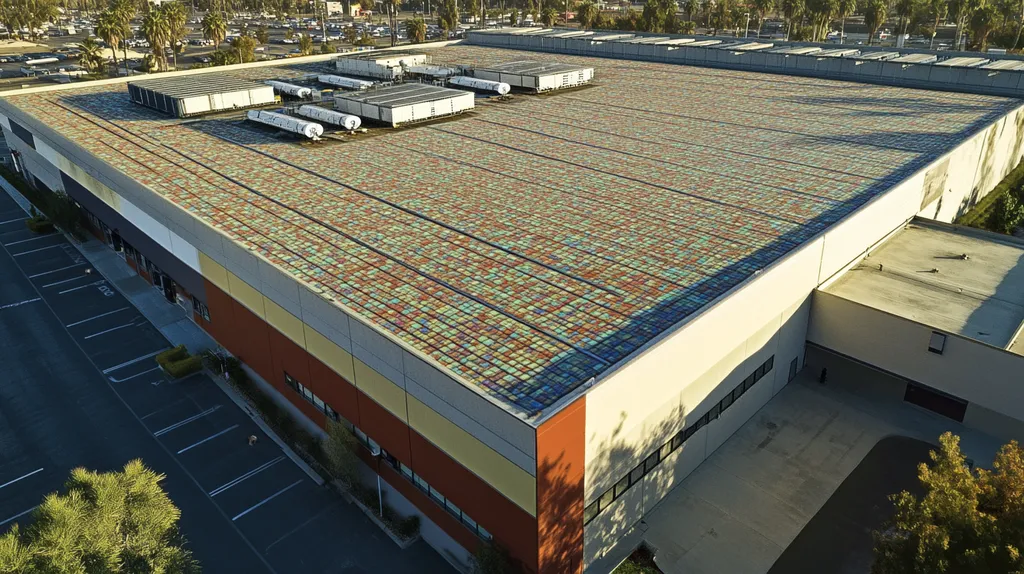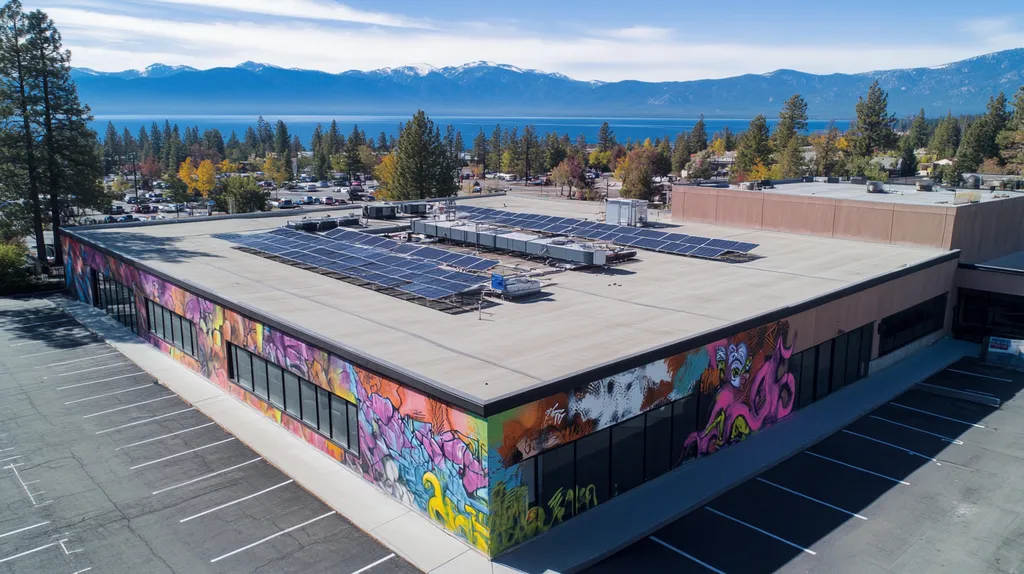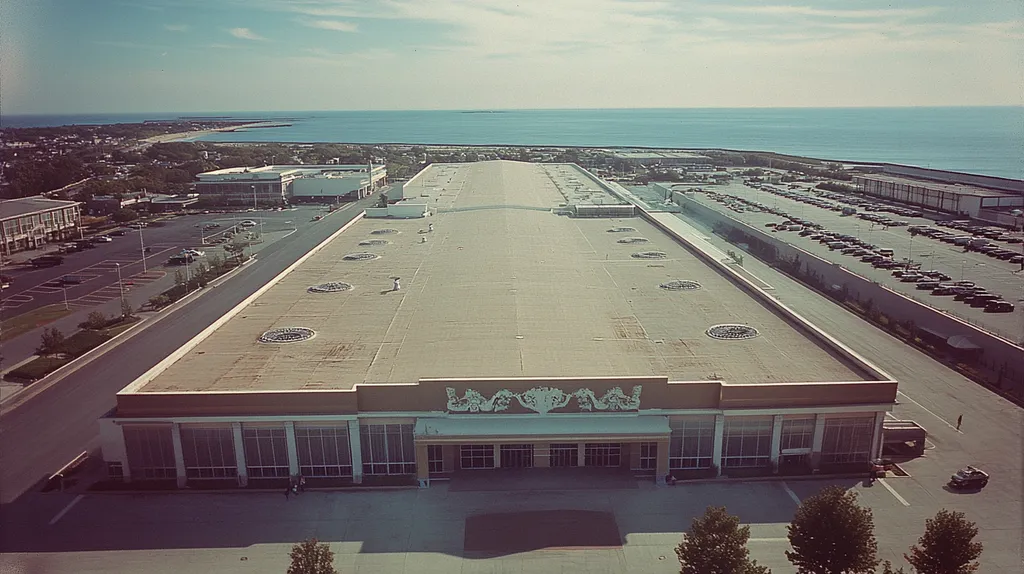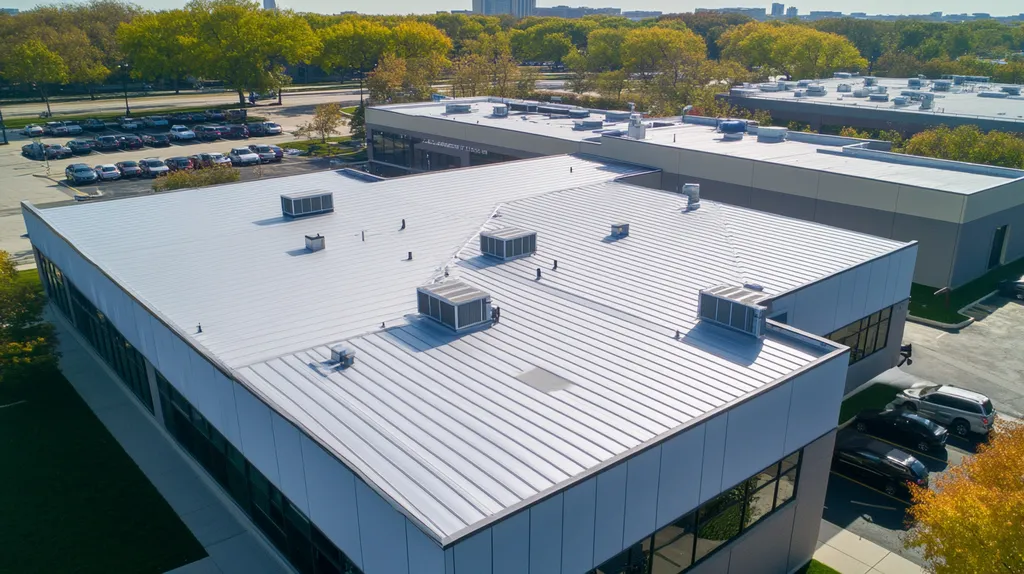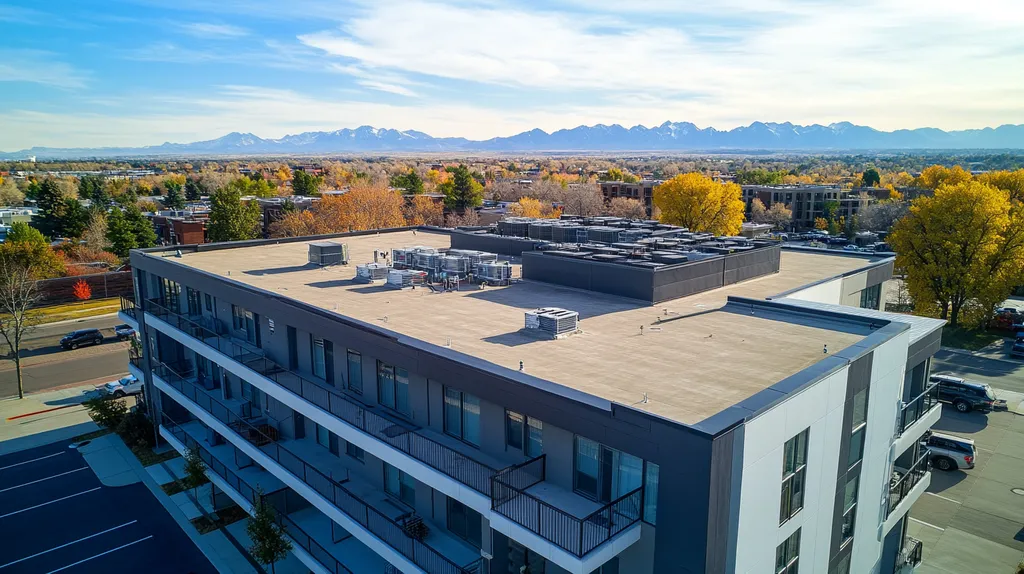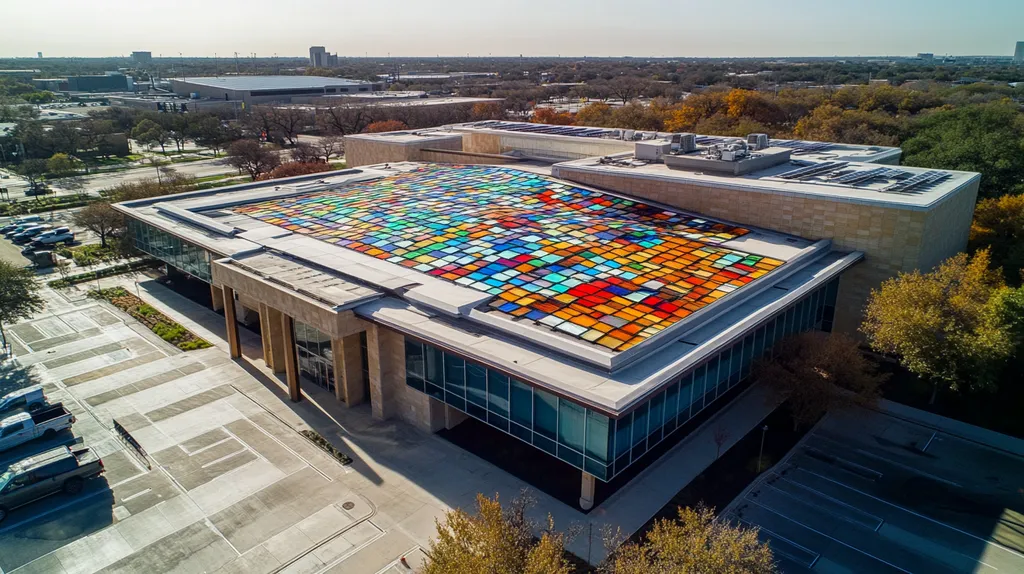Welcome to today’s Battle Royale featuring two roofing heavyweights: “Natural Ventilation” in the east corner versus “Mechanical Ventilation” in the west!
Tonight’s showdown pits these contenders against each other across six punishing rounds designed to test every aspect of their performance for Industrial Roof Ventilation Design.
At stake? Millions in potential costs, decades of building protection, and the critical performance demands of modern commercial and industrial facilities.
Our professional judging panel will evaluate each round on technical merit, real-world performance, and value delivery. After all six rounds, we’ll declare our ultimate champion.
Ladies and gentlemen, facility managers and building owners… it’s time to rumble!
ROUND 1: INITIAL COSTS & INSTALLATION
When designing industrial roof ventilation systems, the initial investment and installation process can make or break both budgets and building performance. Poor ventilation choices lead to operational inefficiencies that compound over time, while optimal solutions protect assets and enhance workplace conditions. Property owners must carefully weigh the upfront costs against long-term value when choosing between natural and mechanical ventilation systems.
Material Expenses
Natural ventilation systems rely primarily on static components like roof vents, gravity ventilators, and wall louvers. These basic components typically cost 40-60% less than mechanical alternatives and require minimal maintenance over their lifetime.
Mechanical ventilation demands more complex equipment including rooftop exhaust fans, supply fans, ductwork, and automated control systems. This sophisticated infrastructure represents a substantial upfront investment, often 2-3 times higher than natural ventilation components. (source: Supply Chain Digest)
While both systems require proper sizing and placement, mechanical systems incur additional expenses for electrical infrastructure and control mechanisms. These costs can escalate further if existing building systems need modifications to accommodate new equipment.
ADVANTAGE: Natural Ventilation
Installation Complexity
Natural ventilation installation typically follows straightforward processes that work with existing building design. The passive nature of these systems means fewer components to coordinate and minimal disruption to daily operations.
The integration of mechanical systems demands careful planning and precise execution. Multiple trades must coordinate to install fans, ductwork, electrical connections, and control systems while maintaining building integrity.
Weather delays impact both installation types, but mechanical systems face additional complications from equipment staging and testing requirements. This complexity extends project timelines and increases labor costs.
ADVANTAGE: Natural Ventilation
Project Timeline
Natural ventilation projects typically complete in half the time of mechanical installations. Simple component mounting and minimal integration requirements allow for rapid deployment with reduced crew sizes.
Mechanical system installation involves sequential phases that can’t be compressed. Electrical work must precede equipment mounting, followed by ductwork installation and control system integration.
The extended timeline for mechanical systems increases exposure to weather delays and coordination challenges. These factors can stretch schedules and impact facility operations.
ADVANTAGE: Natural Ventilation
ROUND 1 WINNER: Natural Ventilation
ROUND 2: DURABILITY & LIFESPAN
When industrial facility managers evaluate ventilation systems, durability and longevity become critical factors that directly impact both safety and operational costs. Poor ventilation choices can accelerate roof deterioration, leading to premature system failure and expensive replacements that disrupt operations.
Studies show that properly designed ventilation systems can extend roof lifespans by 30-40% through effective moisture and temperature management. Making the right choice between natural and mechanical systems carries significant long-term implications for facility maintenance and protection.
Impact on Material Lifespan
Ventilation system durability directly affects the longevity of roofing materials and underlying structures. Natural ventilation systems employ gravity-driven airflow that creates consistent air movement without mechanical stress on building components.
These passive systems maintain steady temperatures and moisture levels throughout the roof assembly, preventing the acceleration of material degradation. Their simplicity means fewer points of potential failure and reduced wear on roofing materials.
Mechanical systems introduce vibration and concentrated airflow patterns that can stress roofing materials over time. The constant operation of fans and motors creates subtle but persistent physical impacts that may compromise material integrity.
ADVANTAGE: Natural Ventilation
Environmental Resistance
Ventilation systems must withstand harsh environmental conditions while maintaining consistent performance. Natural ventilation components feature robust construction with few moving parts, making them highly resistant to weather extremes.
These systems continue functioning during power outages and severe weather events, providing critical air exchange when it’s needed most. Their passive operation means performance actually improves during extreme temperature differentials.
Mechanical systems face greater vulnerability to environmental factors, with exposed motors and electrical components that can fail during storms or temperature extremes. Their performance may degrade over time due to environmental wear on moving parts.
ADVANTAGE: Natural Ventilation
Maintenance and Repair Considerations
Regular system evaluation and maintenance significantly impact long-term ventilation performance. Natural ventilation requires minimal ongoing maintenance beyond occasional cleaning and inspection, with most components lasting the full life of the roof system.
Mechanical ventilation demands frequent assessment of airflow rates and equipment condition to maintain proper operation. The National Institute of Standards and Technology emphasizes that ventilation performance evaluation must include regular monitoring of outdoor air intake and supply airflow rates to ensure compliance with ASHRAE standards. (source: NIST)
Complex mechanical systems require specialized maintenance staff and replacement parts, leading to higher ongoing costs and potential system downtime. These maintenance demands can significantly impact facility operations and budgets.
ADVANTAGE: Natural Ventilation
ROUND 2 WINNER: NATURAL VENTILATION
ROUND 3: PERFORMANCE FACTORS
Industrial ventilation performance directly impacts workplace safety, product quality, and operational costs. Poor ventilation choices can lead to production delays, contaminated products, and unsafe working conditions that compromise both productivity and worker health. Understanding how natural and mechanical systems perform under real-world conditions is crucial for making informed ventilation decisions.
Airflow Efficiency
Proper airflow management is essential for maintaining safe and productive industrial environments. Purdue University research demonstrates that roof exhaust systems can effectively remove airborne particles when ventilation rates are sufficiently high, directly impacting air quality and worker safety. (source: Purdue University)
Natural ventilation systems rely on thermal buoyancy and wind patterns to move air through facilities. While this passive approach works well in ideal conditions, it can struggle during periods of minimal temperature differential or low wind activity.
Mechanical ventilation provides consistent, controllable airflow regardless of external conditions. These systems can maintain specific air exchange rates and respond quickly to changing facility needs through automated controls.
ADVANTAGE: Mechanical Ventilation
Energy Use
Energy consumption significantly impacts both operational costs and environmental footprint. Natural ventilation systems require minimal power, typically only using electricity for optional monitoring equipment or automatic controls.
This passive operation makes natural ventilation highly energy efficient, reducing both utility costs and carbon emissions. The system’s simplicity also means fewer components that could waste energy through inefficiency or malfunction.
Mechanical systems require constant power for fans, motors, and control systems. While modern equipment offers improved efficiency, the ongoing energy demands can substantially impact facility operating costs.
ADVANTAGE: Natural Ventilation
Performance Stability
Consistent ventilation performance ensures reliable facility operations and product quality. Natural ventilation effectiveness varies with weather conditions, potentially compromising air quality during temperature extremes or calm periods.
These variations can impact temperature-sensitive processes and create uncomfortable working conditions. Facilities must often implement backup systems to maintain operations during unfavorable conditions.
Mechanical ventilation delivers steady, predictable performance in all weather conditions. This reliability ensures consistent air quality, temperature control, and contamination removal throughout the facility.
ADVANTAGE: Mechanical Ventilation
ROUND 3 WINNER: MECHANICAL VENTILATION
ROUND 4: MAINTENANCE REQUIREMENTS
Proper maintenance of industrial roof ventilation systems directly impacts workplace safety, equipment longevity, and operational costs. When ventilation systems fail due to poor maintenance, facilities face immediate threats including dangerous air quality, accelerated equipment wear, and production disruptions that can cost thousands per hour.
Studies show that ventilation system failures account for over 30% of emergency facility shutdowns, making maintenance strategy a critical factor in operational planning. The choice between natural and mechanical ventilation systems significantly impacts both maintenance complexity and resource allocation.
Routine Inspection Requirements
Natural ventilation systems require basic visual inspections of vents, louvers, and intake openings. These inspections typically focus on debris removal and checking for physical damage, tasks that can be performed by general maintenance staff.
Most natural ventilation components can be inspected from roof level without special equipment. The simplicity of these systems means fewer potential failure points and clearer visual indicators of problems.
Mechanical systems demand comprehensive inspections of motors, bearings, belts, and electrical components. These specialized inspections require certified technicians and often involve testing equipment that adds to maintenance costs.
Supply Chain Execution and Distribution Management emphasizes that mechanical systems need careful monitoring of exhaust and makeup air rates to maintain proper building pressure, requiring additional expertise and equipment. (source: Supply Chain Execution and Distribution Management)
ADVANTAGE: Natural Ventilation
Maintenance Frequency
Natural ventilation maintenance typically follows quarterly or semi-annual schedules. The passive operation means fewer moving parts to maintain and lower frequency of required interventions.
These systems generally maintain consistent performance between scheduled maintenance visits. Emergency repairs are rare due to the robust, simple design of passive components.
Mechanical ventilation requires monthly or bi-monthly maintenance checks. Regular filter changes, belt adjustments, and lubrication of moving parts create a constant maintenance cycle.
The complexity of mechanical systems increases the likelihood of component failures between scheduled maintenance. This higher maintenance frequency directly impacts facility maintenance budgets and staff resources.
ADVANTAGE: Natural Ventilation
Maintenance Complexity
Natural ventilation maintenance focuses primarily on keeping air pathways clear and ensuring weather seals remain intact. These straightforward tasks require basic tools and general maintenance knowledge.
The simplicity of natural systems means most maintenance can be completed without specialized training. This reduces dependency on external contractors and allows for faster response to maintenance needs.
Mechanical ventilation maintenance involves complex diagnostic procedures and component replacements. Technicians must understand electrical systems, motor mechanics, and control programming.
The intricate nature of mechanical systems often requires multiple specialized skill sets for proper maintenance. This complexity increases both maintenance time and costs while creating more opportunities for system failures.
ADVANTAGE: Natural Ventilation
ROUND 4 WINNER: Natural Ventilation
ROUND 5: SUSTAINABILITY CREDENTIALS
As environmental regulations tighten and energy costs soar, sustainable ventilation has become a critical factor in industrial facility design. Poor ventilation choices today can lock facilities into decades of excessive energy consumption and environmental impact, while optimal solutions protect both bottom lines and planetary resources.
The stakes are especially high for facilities aiming to achieve green building certifications or meet corporate sustainability targets. Understanding how ventilation choices impact environmental footprints helps property owners make informed decisions that benefit both their operations and the planet.
Environmental Impact
Industrial ventilation systems significantly influence a facility’s environmental footprint through their materials, operation, and end-of-life disposal. Natural ventilation systems use minimal materials and create virtually no waste during operation, reducing their lifecycle environmental impact.
These passive systems require no harmful refrigerants or specialized disposal procedures for worn components. Their simplicity means fewer resources consumed in manufacturing and maintenance.
Mechanical systems demand regular replacement of filters, belts, and other components that often end up in landfills. Their operation generates both direct and indirect environmental impacts through energy consumption and maintenance-related waste.
ADVANTAGE: Natural Ventilation
Energy Efficiency
Industrial roof ventilation must balance effective air exchange with responsible energy use. Natural ventilation leverages physics and building design to move air without powered equipment, eliminating most energy consumption.
Modern natural ventilation designs can achieve optimal air exchange rates through strategic placement of vents and careful consideration of facility layout. Supply Chain Executive emphasizes that proper ventilation design depends heavily on facility size, layout, and climate conditions to ensure optimal performance. (source: Supply Chain Executive)
Mechanical systems require constant energy input to maintain airflow, even during moderate weather conditions. While variable speed drives and smart controls can improve efficiency, these systems still consume significant power throughout their operational life.
ADVANTAGE: Natural Ventilation
Future Adaptability
Ventilation systems must adapt to evolving environmental standards and changing facility needs. Natural ventilation systems offer inherent flexibility through their simple design, allowing for easy modifications as requirements change.
These passive systems can often be enhanced or expanded without major infrastructure changes. Their independence from complex mechanical systems makes them highly adaptable to future sustainability requirements.
Mechanical systems may require significant upgrades or replacements to meet stricter efficiency standards. Their reliance on specific technologies can make adaptation more costly and complex.
ADVANTAGE: Natural Ventilation
ROUND 5 WINNER: NATURAL VENTILATION
ROUND 6: SPECIALIZED APPLICATIONS
When designing industrial roof ventilation systems for specialized facilities, the stakes couldn’t be higher. From pharmaceutical manufacturing to cold storage warehouses, inadequate ventilation can lead to product contamination, regulatory violations, and operational shutdowns costing millions. Understanding how different ventilation approaches perform in these demanding environments is crucial for facility success.
Clean Room Operations
Clean room facilities demand precise control over air quality, particle counts, and pressure differentials. Natural ventilation systems struggle to maintain the strict environmental parameters required for clean room operations.
The variable nature of passive airflow makes it nearly impossible to guarantee consistent positive pressure or maintain specific air change rates. This unreliability can compromise product quality and lead to expensive contamination events.
Mechanical ventilation systems excel in clean room environments through precise control of airflow patterns and filtration. These systems can maintain exact pressure relationships while ensuring proper air changes per hour.
ADVANTAGE: Mechanical Ventilation
Temperature-Critical Storage
Facilities storing temperature-sensitive materials require consistent environmental conditions regardless of external weather. Natural ventilation systems show significant performance variation based on wind velocity and roof angles, making them unreliable for critical storage applications.
Turbo ventilators and other passive systems cannot maintain tight temperature tolerances, especially during extreme weather conditions or periods of low wind activity. Performance fluctuations can lead to product degradation and compliance issues.
Mechanical ventilation provides dependable temperature control through automated systems and precise airflow management. This reliability is essential for maintaining product integrity in pharmaceutical warehouses, cold storage facilities, and other temperature-critical environments.
ADVANTAGE: Mechanical Ventilation
High-Humidity Processing
Manufacturing processes that generate significant moisture require effective humidity management to prevent condensation and mold growth. Natural ventilation systems can help regulate humidity levels through continuous air exchange.
These passive systems work particularly well in facilities with high heat loads, as the temperature differential enhances the stack effect. The simplicity of natural systems also reduces maintenance concerns in corrosive environments.
However, mechanical ventilation offers superior humidity control through targeted exhaust and the ability to adjust airflow rates based on real-time conditions. This precision becomes crucial during periods of high production or adverse weather.
ADVANTAGE: Mechanical Ventilation
ROUND 6 WINNER: MECHANICAL VENTILATION
AND THE WINNER IS…
After six grueling rounds of technical analysis, with victories traded back and forth like heavyweight punches, we have our verdict!
In a decisive 4-2 victory, NATURAL VENTILATION claims the championship belt! This passive powerhouse dominated the competition in cost efficiency, durability, maintenance simplicity, and sustainability credentials. Its knockout combination of lower installation costs, minimal maintenance requirements, and superior energy efficiency proved unbeatable.
But don’t count MECHANICAL VENTILATION out! This technical titan proved its worth in specialized applications and performance consistency. For clean rooms, temperature-critical storage, and facilities requiring precise environmental control, mechanical systems remain the undisputed specialist champion.
IMPORTANT NOTICE: Every facility faces unique challenges that can impact ventilation system performance. Local climate conditions, building design, operational requirements, and regulatory standards all play crucial roles in determining the optimal solution. This analysis provides general guidance but cannot account for all variables. Property owners should consult qualified roofing professionals who can evaluate their specific situation before making final decisions.
Ladies and gentlemen, in the high-stakes world of industrial roof ventilation, success isn’t about following the crowd – it’s about matching your facility’s specific requirements with the right contender’s strengths. Choose wisely, and may the best system win!
FREQUENTLY ASKED QUESTIONS
Q. What are the initial costs of commercial roof ventilation systems?
A. Initial costs for commercial roof ventilation systems vary significantly between natural and mechanical options. Natural systems tend to have lower upfront costs due to fewer components and simpler installation. In contrast, mechanical systems often require substantial investments in machinery and electrical infrastructure, potentially leading to higher long-term operational costs.
Q. How does durability impact industrial roof ventilation choices?
A. Durability is crucial in selecting ventilation systems for industrial roofs, as it affects overall maintenance costs and longevity. Natural ventilation offers higher durability due to fewer moving parts and less mechanical stress. In contrast, mechanical systems may experience wear and tear from constant operation, possibly leading to premature failures and increased repair costs.
Q. How do performance factors differ between natural and mechanical ventilation?
A. Performance factors such as airflow efficiency and consistency vary widely between systems. Natural ventilation relies on ambient conditions, which can fluctuate, impacting air quality. On the other hand, mechanical ventilation provides reliable and adjustable airflow, ensuring consistent performance regardless of external conditions, making it more suitable for sensitive environments.
Q. What are the maintenance requirements for commercial roof systems?
A. Maintenance needs vary significantly between ventilation types. Natural ventilation systems typically require simple inspections and minimal upkeep, which can be managed with regular cleaning. Mechanical systems, however, demand frequent and detailed servicing by trained professionals, often leading to extended downtime and increased maintenance costs over time.
Q. How do sustainability credentials affect ventilation choices?
A. Sustainability credentials play an essential role in selecting ventilation systems, especially in today’s environmentally conscious market. Natural ventilation systems typically have a lower environmental impact due to their energy efficiency and minimal resource use. Conversely, mechanical ventilation tends to have a higher carbon footprint due to energy consumption and the disposal issues associated with replacement parts.
Q. What are specialized applications for industrial ventilation systems?
A. Specialized applications require tailored ventilation solutions to meet specific operational needs, such as in clean rooms and temperature-sensitive environments. Mechanical systems excel in these settings, ensuring precise control over air quality and temperature, while natural ventilation struggles to offer the necessary reliability and stability needed for such applications.
Q. What is the role of ventilation in worker safety?
A. Ventilation systems are crucial for maintaining a safe working environment, as they regulate air quality and manage hazardous substances effectively. Proper ventilation helps remove airborne contaminants and ensures that temperature and humidity levels remain within safe limits, thus safeguarding employee health and enhancing overall productivity in the workplace.

